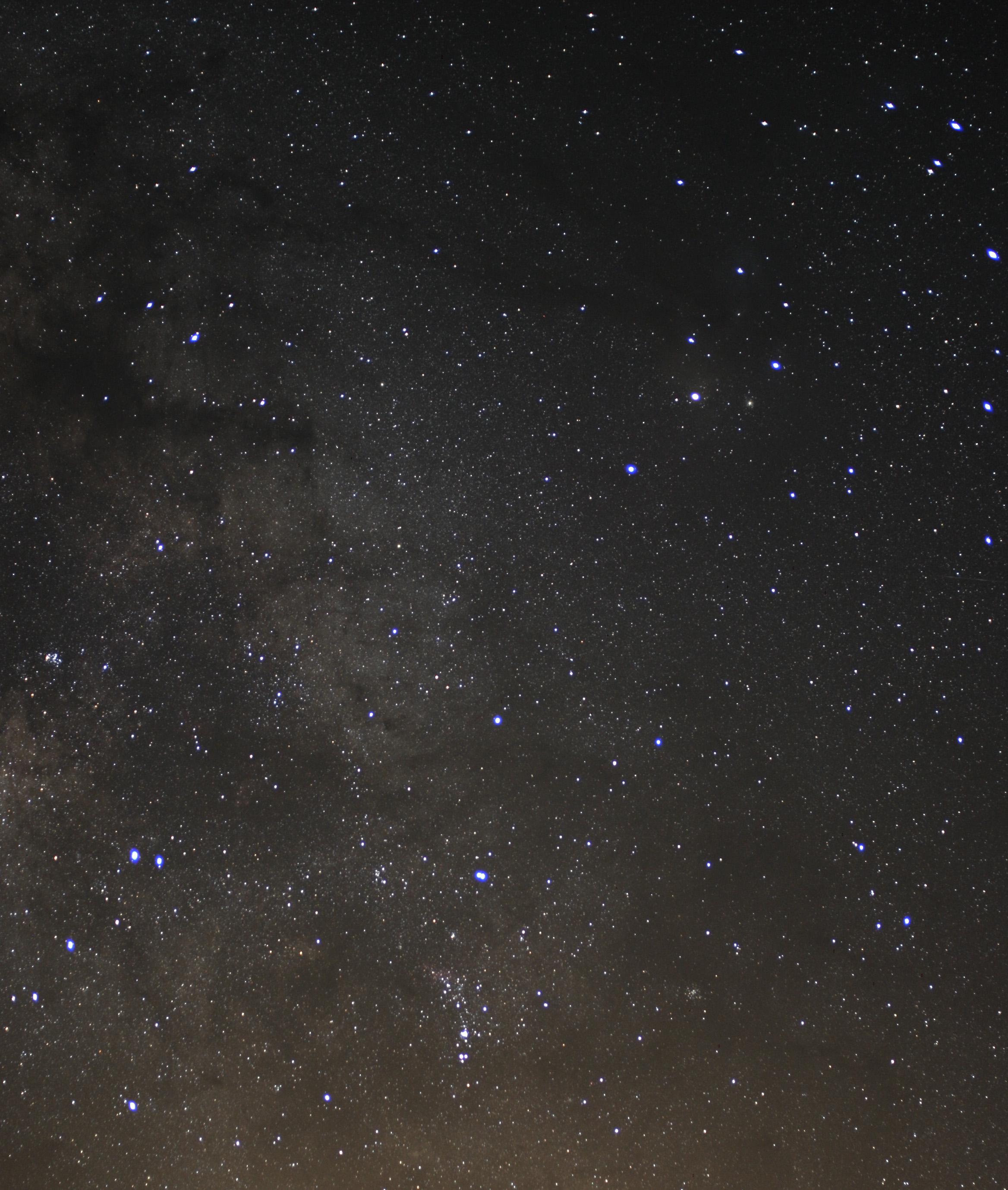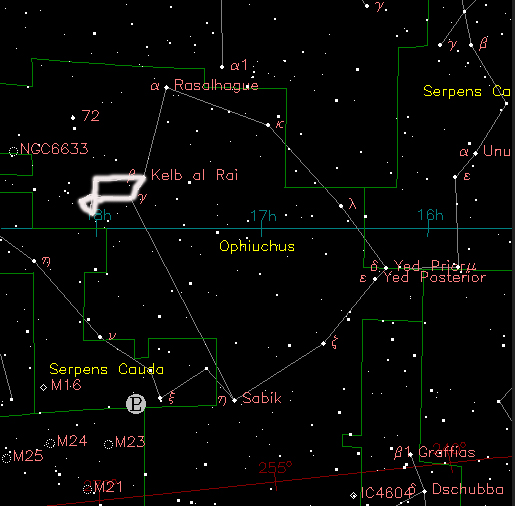Observing near the summer solstice means a short observing night sandwiched between a late sunset and an early dawn. Rather than rush through an observing project I find it’s a great time of the year to sit back and trace familiar constellations in my minds eye, and marvel with anticipation as the eastern horizon brightens. Soon, the stars of Scorpius and Sagittarius will rise and the “clouds” on the horizon take shape as lumps and glittery clusters, bisected by dark nebulae — those mysterious star-less regions within our Milky Way Galaxy.
It’s hard not to just sit and gaze at the unfolding spectacle. So for the first hour or two after darkness last Saturday night (June 16, 2012) I sat in my meteor observing chair and observed the sky with my own eyes. Every now and then I jumped up and eyeball-aimed Mojo’s 15-inch Litebox reflector at this cluster or that nebula. The sky conditions at Amboy Crater were near perfect.
We have 360 degree perfect horizons at this site, with small light domes from 29 Palms, and from departing trains. Temperatures are warm with just a hint of breeze, hot before sunset, shirtsleeve observing all night long, humidity 10% rising to 20% at dawn. Conditions are dry and warm. No dew. Ever! Here’s the Clear Sky Chart for Amboy Crater.
As I was looking at the constellation Lyra and its gem-of-a-telescope-target, the Ring nebula, M57, I spotted an asterism nearby, in the northeastern section of Ophiuchus that looked just like Lyra, except it was upside down.
That looked like a good place to select an observing project, so I cracked open my copy of the Night Sky Observers Guide, volume 2 Spring and Summer to the constellation Ophiuchus. I noticed this little group of stars that looked like Lyra were part of an open cluster, and that there was another pretty cluster in the neighborhood.
Best of all, Barnard’s Star was within the cluster! Barnard’s Star is the second closest star to the Earth — only 6 light years away, shining at a faint magnitude 9.5. The Alpha Centauri system, including Proxima Centauri, together are about 4 LY away, but we can’t see them from the US. Barnard’s Star has the greatest proper motion — the angular annual movement across the line of sight against the distant stellar background of any star. It moves 10.4 seconds of arc per year. That compares to a quarter of a degree in a human lifetime, roughly the angular diameter of the full Moon.
Amateur astronomers, carefully sketching or imaging Barnard’s Star once a year for a couple years can actually track the movement of the star. It’s a cool red dwarf. And it’s listed in Jim Kaler’s fabulous book The Hundred Greatest Stars. Jim writes “Barnard’s Star has a metal content only 10 percent that of the Sun. That coupled with its high velocity shows it to be a special, rather rare, kind of star called a “subdwarf” that more belongs to the metal-poor and ancient halo of our Galaxy (the Sun belonging to the disk). It is merely passing through our local neighborhood.”
You’ll definitely need a star chart to find it. Here’s one showing Barnard’s Star within the Melotte 186 star cluster with pretty IC 4665 nearby. This tiny faint red dwarf is a challenge, but it’s worth it, as are the two clusters.
The neighborhood it’s passing (to our line of sight), is through the demoted constellation Poniatowski’s Bull. This V- shaped set of stars looks like a bull’s head and horns in northeastern Ophiuchus. I see Lyra, instead, by adding a few other stars. It was named Poniatowski’s Bull (Taurus Poniatovii), to honor Stanislaus Poniatowski, King of Poland from 1764 to 1795. Named by Polish-Lithuanian astronomer and mathemetician Marcin Odlanicki Poczobutt whose observatory at Vilnius gained royal favor from the King.
So now, when you are looking at our Milky Way, notice Vega and her constellation Lyra. Then turn your head ever so slightly to the right, and you’ll see huge Ophiucus, which looks like a big percolator coffee pot to me. It’s above and between Scorpius and Sagittarius. The left star of the “lid” of the coffeepot is part of my “upside down Lyra”.
Nothing beats visual astronomy. Without taking the time to sit down and just look at the sky, and trace the constellations I never would have discovered this lovely demoted constellation for the first time!
There is always something to observe that you’ve never seen before, even if it is the same old stars. That’s what makes visual astronomy my go-to hobby. Pun intended!
Mojo’s images and writeup from the same night: predawn planets & astrophotography



